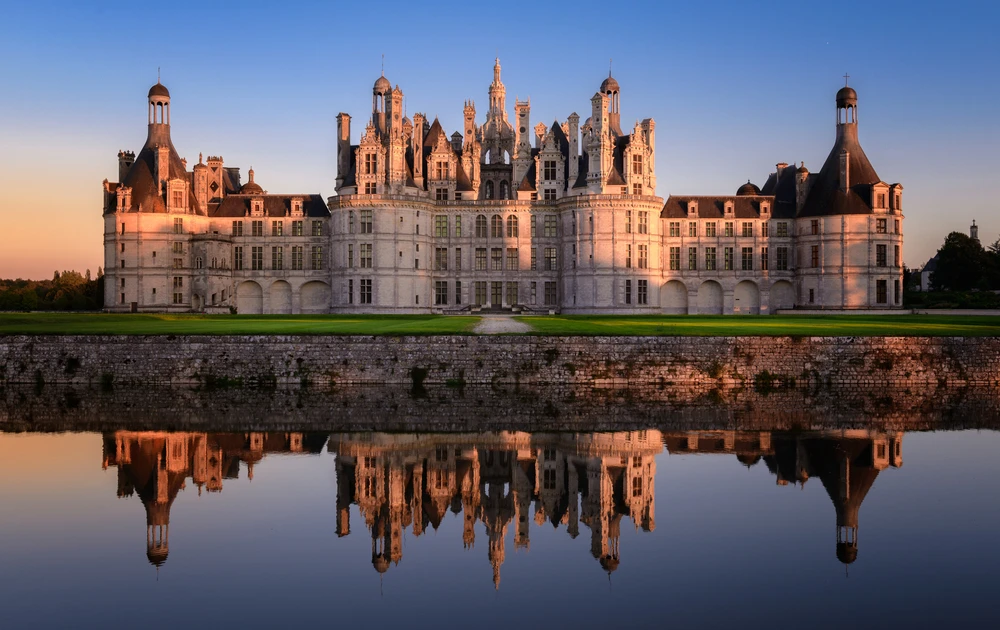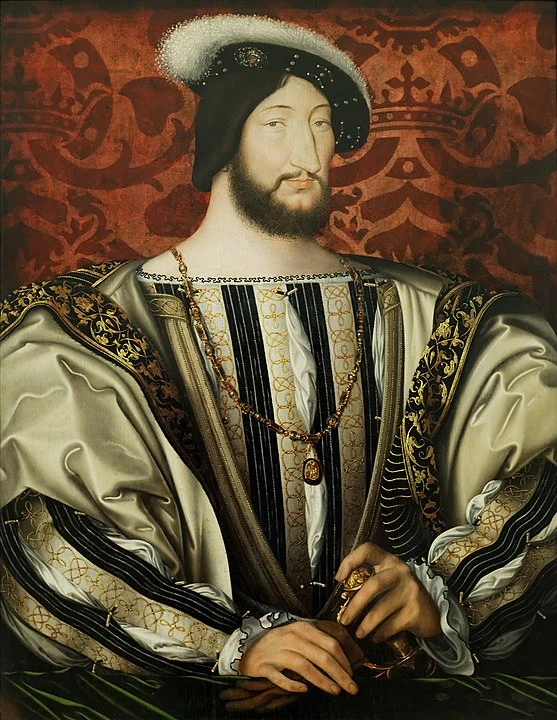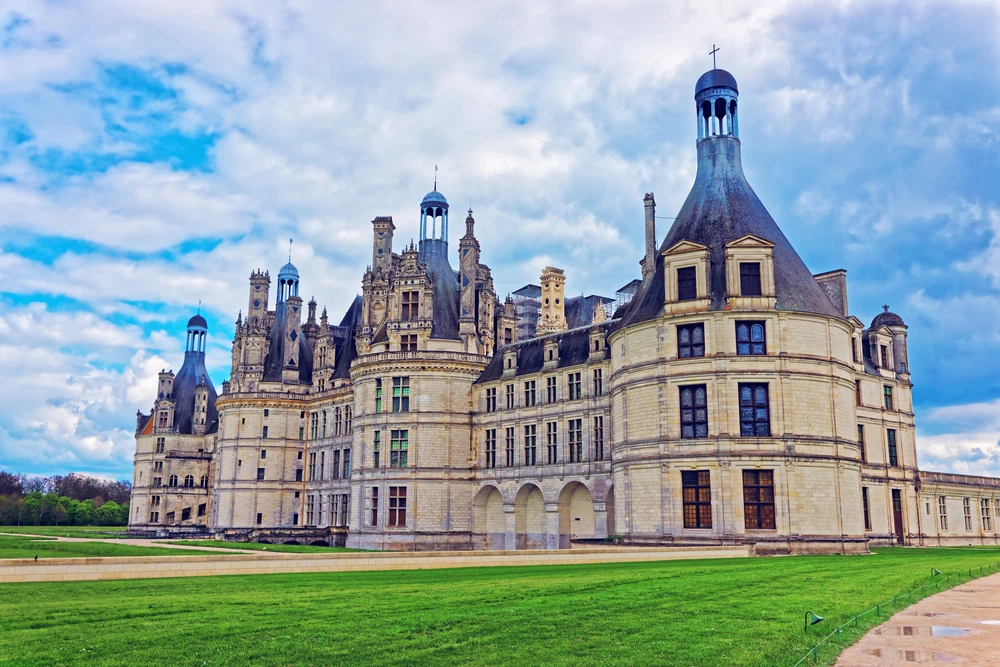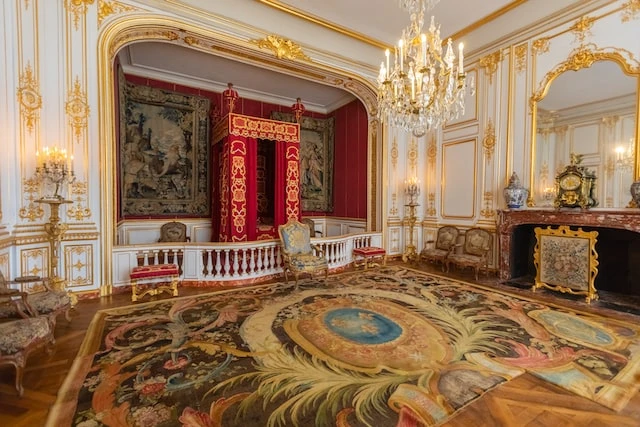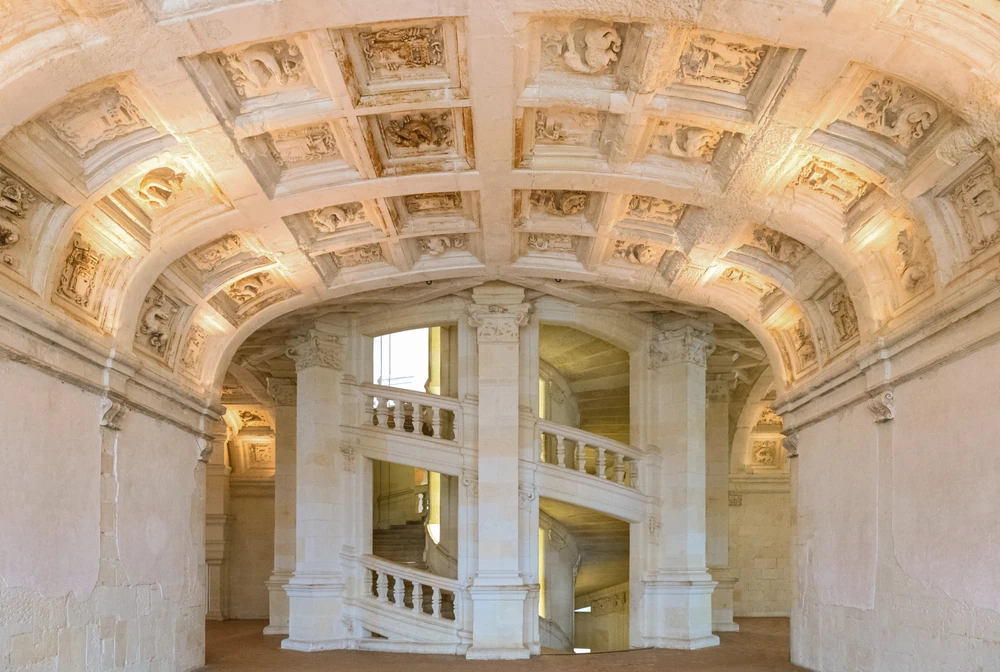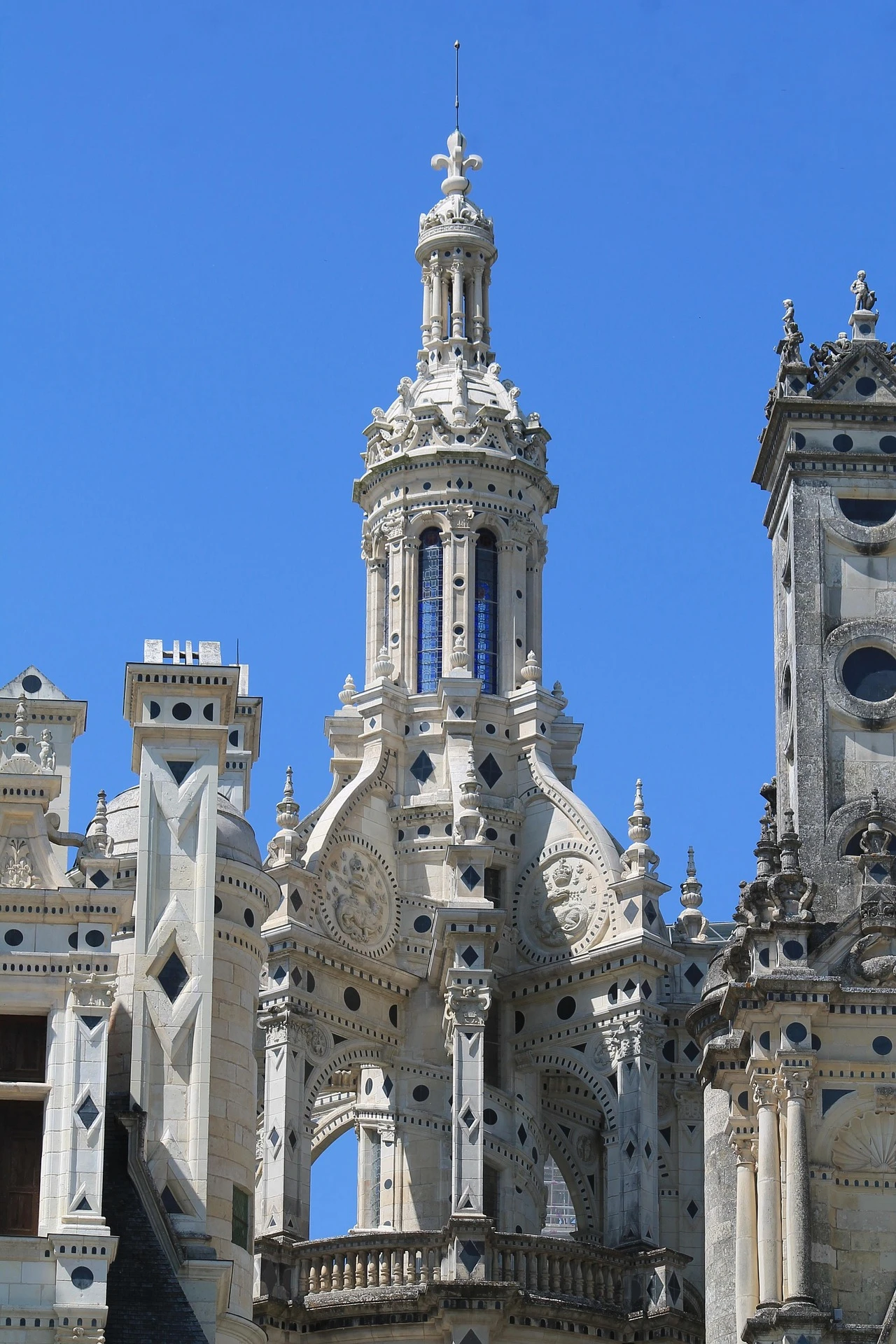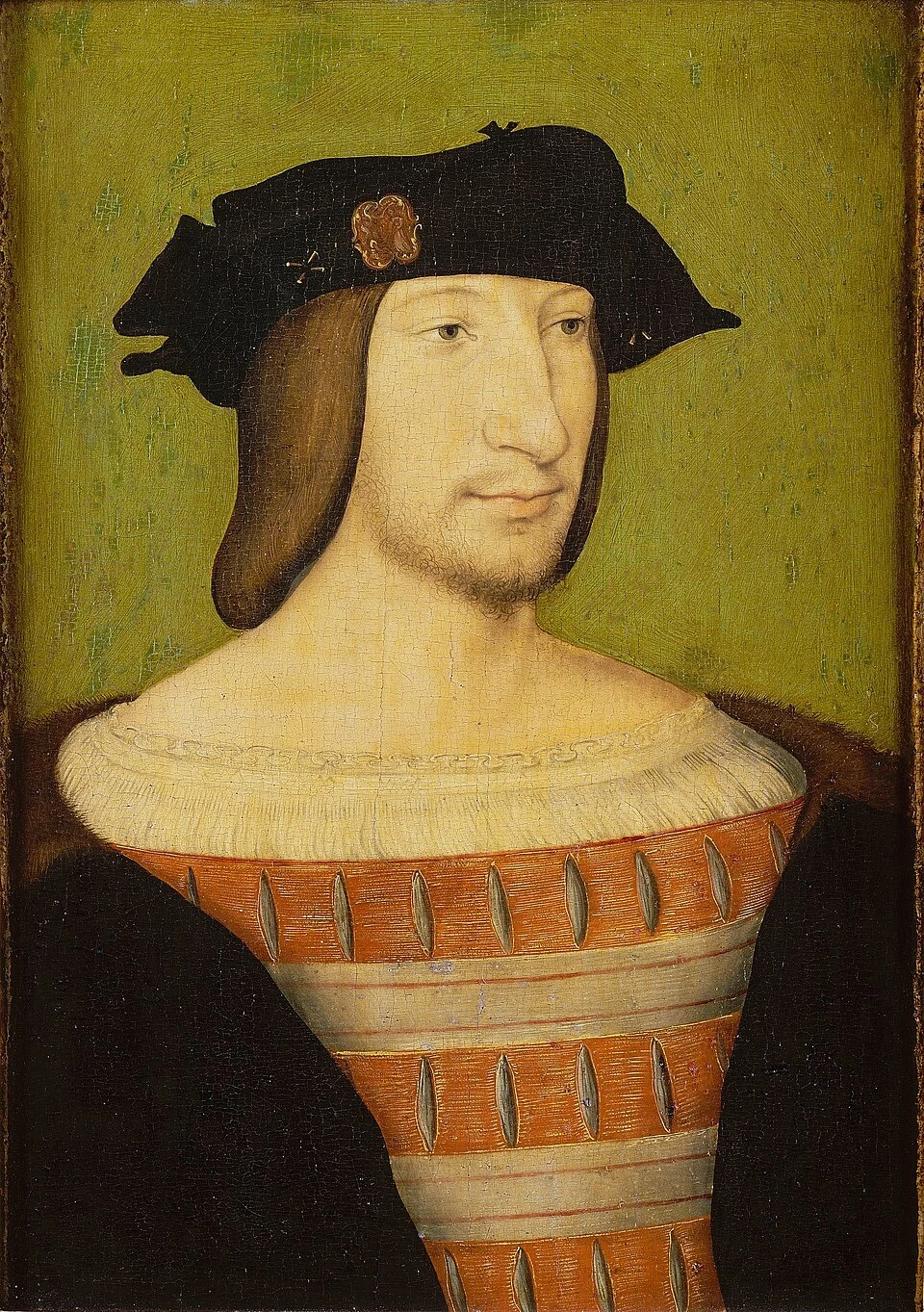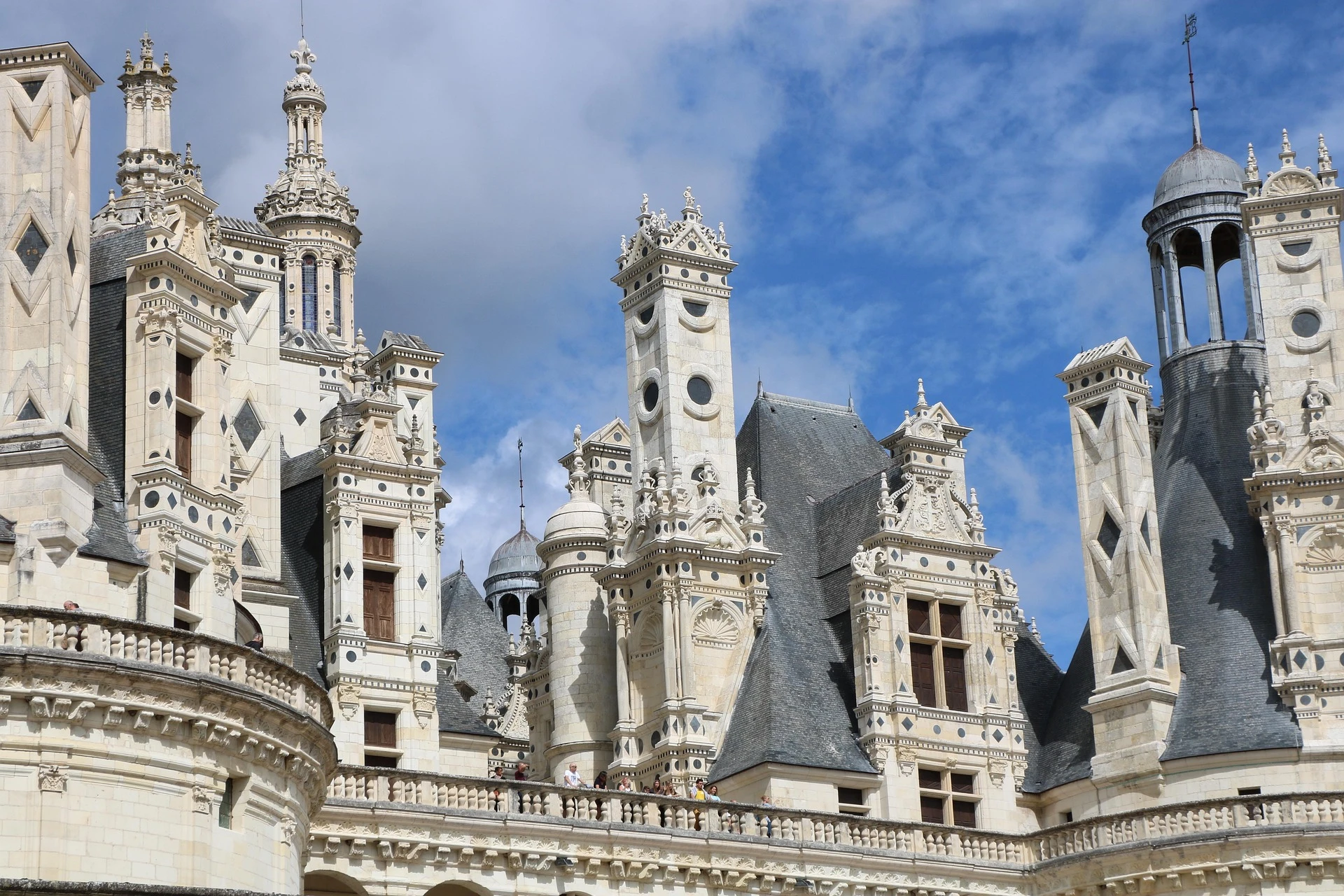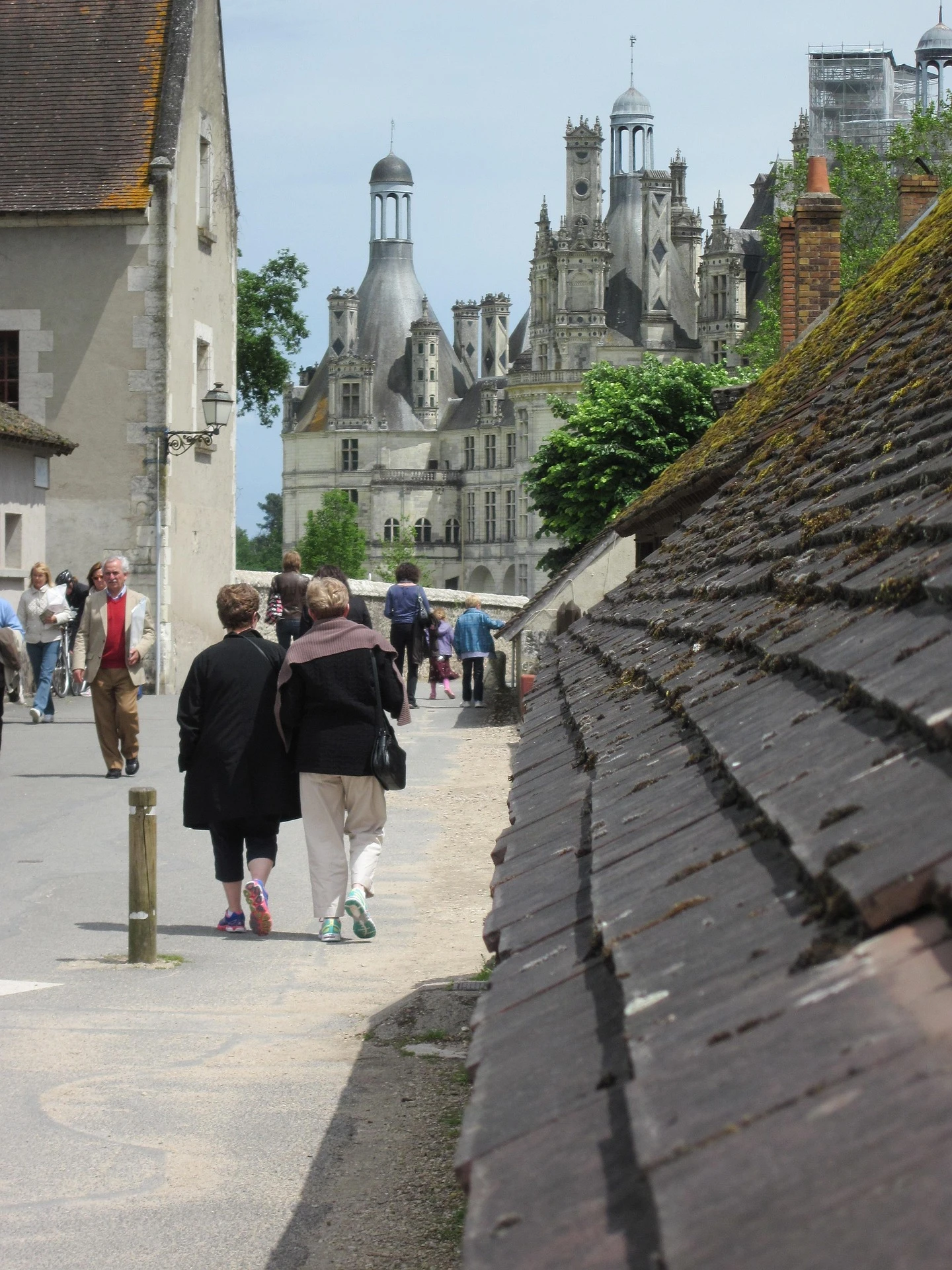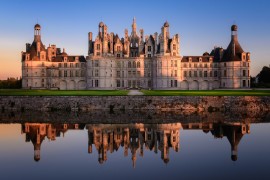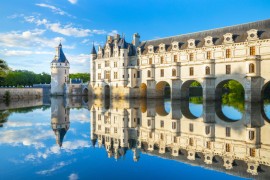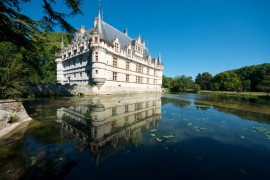Here is a summary of what you will discover: the history of the Château de Chambord and its connection to Francis I, the secrets of its Renaissance architecture and double spiral staircase, the iconic places not to be missed during your visit, little-known anecdotes about court life, and practical advice for organizing your visit to the estate in the best possible conditions.
Château de Chambord presentation
The Château de Chambord is located in the Loir-et-Cher region, some fifteen kilometers from Blois, in the heart of the Sologne forests. You reach it via long, pine-lined roads, then suddenly the silhouette rises up: white, slender, disproportionate. You discover a medieval fortress transformed into a palace of light, topped with domes and lanterns, where each chimney seems to tell a story.
Commissioned by François Iᵉʳ, the château was to be a hunting lodge, but also a manifesto: to show the world that France was the new Italy of the Renaissance. The forms are geometric, the volumes majestic, the symmetry perfect. Yet nothing is cold: Chambord is a fusion of Italian science and French poetry. The Sologne gives the site a special atmosphere. Misty mornings wrap the towers in a silvery veil, golden evenings turn stone to flame. All around, the forest rustles like a jewel box. Here, nature doesn't serve as a backdrop: it is the backdrop.
Chateau de Chambord Photo by Tsomchat/Shutterstock
With its 440 rooms, 84 staircases and 365 fireplaces, Chambord is the largest of the Loire castles. From the outset, it was a field of experimentation: light, air and perspective were studied as elements of art. The château's layout is said to reproduce the Jerusalem cross, a symbol of divine perfection. François Iᵉʳ wanted a perfect world, built for his glory and that of God.
This monument, a UNESCO World Heritage Site since 1981, attracts over a million visitors a year. But despite its fame, it retains a soul. Walking through the courtyard of honor, you feel the same emotion as the ambassadors of the time: that of a man faced with the work of a king. conceived as an immense dream in stone.
Chambord, the royal folly of François Iᵉʳ
It all starts with an idea. In 1515, the young François Iᵉʳ, victorious at Marignan, discovered the wonders of the Italian Renaissance. In Florence, Milan, he saw the palaces, the galleries, the domes. Back in France, he wanted more: a castle that was a world. It's in Sologne that he finds his location, in the middle of waters and forests, hunting territory where he can reign in solitude.
François I circa 1530 (by Jean Clouet, oil on canvas, 96 × 74 cm, Paris, Musée du Louvre).
Construction began in 1519. Barges were set up to transport the stone, and craftsmen were brought in from all over Europe. Hundreds of men cut, sculpted and laid the stone. The castle plan is attributed to the Italian Domenico da Cortona, but the hand of Léonard de Vinci floats everywhere. The master died the same year in Amboise not far from Chambord, but his sketches of staircases, symmetrical plans and ideal cities inspired everything. The result is striking: a square keep, four round towers, wings, galleries, a central staircase that defies logic. Chambord is a wonder machine.
François Iᵉʳ hardly ever lived there. He came there to hunt, to show off, to impress. In 1539, he received Charles V, his great rival, in an unforgettable display of splendor. Everything about Chambord says the same thing: France is a kingdom of light, and its king is its center.
What you can see at Château de Chambord
To visit the Château de Chambord is to plunge into a world apart, where stone and light have been in dialogue for five centuries. The tour opens onto the main courtyard, surrounded by four majestic towers. The eye wanders between arcades, vaults and staircases. Everything here is designed to surprise.
Chambord Castle Photo by Roman Babakin/Shutterstock
The interiors of Château de Chambord
Inside, the large halls follow one another in a spectacular staging. First we discover the vast ground-floor galleries, with their coffered ceilings and walls adorned with the salamander, the emblem of Francis I. These rooms were used to welcome the king's guests, ambassadors and artists. These rooms were used to welcome the king's guests, ambassadors and artists. It was here that the monarch's power was displayed in all its excess.
Interior of a room at Château de Chambord / Photo by Dorian Mongel on Unsplash
On the second floor, we enter the royal apartments, meticulously reconstructed. Francis I's monumental bed, sculpted chests and crimson drapes evoke the solemnity and magnificence of a reign when everything was a symbol. In the king's bedroom, light streams through the large mullioned windows, revealing the tapestries and massive furniture. Each object recounts a fragment of royal power. A little further on, the appartements de Louis XIV recall another era of glory. The Sun King turned Chambord into a theater of power: he had Molière performed there, received dignitaries and gave memorable parties. The gilded armchairs, royal portraits, mirrors and woodwork reflect this desire to dazzle. Chambord thus becomes an extension of Versailles in the heart of Sologne.
The tastefully restored rooms of the Maréchal de Saxe bear witness to a more military but no less prestigious life. This great captain, a favorite of Louis XV, set up his quarters here and turned the château into a place for receptions and strategy. His apartments blend pomp and discipline, in the image of his era.
Staircases and terraces: magic in motion
The double-revolution staircase at Château de ChambordPhoto by Gimas/Shutterstock
At the heart of the château, the double-helix staircase is always fascinating. Two ramps rise side by side without crossing, allowing two people to ascend and descend without ever meeting. The full influence of Leonardo da Vinci can be felt here. To climb this staircase is to take part in a ballet of light and shadow. Steps wind, vaults cross, light streams down from the dome. This is the beating heart of Chambord, a masterpiece that still speaks of ingenuity and grace.
At the top, you reach the terraces. Here, the spectacle is complete. Dozens of chimneys, skylights, bell towers and lanterns reach for the sky. You walk between them as if in a suspended city. The view extends over the Sologne forest, the royal alleys, the canal dug in the 17th century. The king wanted to reign even over the landscape, and that's exactly how it feels.
On the way down, you notice the perfect coherence of the architecture. All is symmetry, all is perspective. The château seems to breathe. It imposes itself not just by its size, but by its internal logic: Chambord is a dream that rises, a thought turned to stone.
The Château de Chambord/ Tower / Photo by Shalev Cohen on Unsplash
The gardens and the royal estate
The recently restored French-style gardens give the château its original depth. Designed with rigor and elegance, they extend the north facade and offer a grandiose setting for the visit. The straight paths, boxwood parterres and flower beds frame the view of the château. It's here that the genius of the royal staging becomes clear: nature is tamed, ordered and mastered.
The surrounding estate extends over 5,400 hectares, enclosed by a 32-kilometre wall. It is the largest enclosed forest park in Europe. François I organized sumptuous hunts here. Today, deer and wild boar can still be seen. Trails allow you to walk along the canal, along the edge of the ponds, observing wildlife and birds. Chambord is also a haven of nature, a place where the king and the forest still converse.
The vast estate of Chambord Photo by saiko3p/Shutterstock
Some visitors choose to explore the estate by bicycle or horse-drawn carriage. Others prefer to sit by the water and watch the reflection of the château in the canal. At sunrise or dusk, the light plays with the towers and dormer windows. It's a sight you'll never tire of.
What it really feels like to be there
Chambord cannot be visited: it must be experienced. As soon as you cross the bridge and enter the main courtyard, you feel something strange: a mixture of grandeur and silence. The light-colored stone, the arches and the dizzying height make you feel dizzy. You walk slowly, almost religiously. You're no longer just a visitor, you become a witness.
One of Chambord's sculpted fireplaces/ Photo chosen by Monsieur de France: by cristouclap by Pixabay
Inside, the echoes of footsteps on the stone, the coolness of the rooms and the rustle of the shutters tell the story of a château still inhabited by the memory of kings. As you climb the double-helix staircase, you feel as if you've stepped back in time. Then, once on the terraces, the wind rushes in, the chapel bells ring out, and your gaze is lost in the green horizon. It's this precise moment that leaves a lasting impression: the moment when you realize that Chambord is not just architecture, but emotion. It's an encounter with absolute beauty, the kind that can't be explained but can be felt.
The history of Château de Chambord
François 1st's dream
François 1er in 1515, a few years before the construction of Chambord / Photo chosen by Monsieur de France: By Jean Clouet - 8QEEIPFzZ8g64Q on Google Cultural Institute maximum resolution, Public domain, https://commons.wikimedia.org/w/index.php?curid=21843136
The year is 1519. François I was twenty-five and had just triumphed at Marignan. He dreamed of a château in his image: young, bold and inspired by Italy. He chose the wild, game-filled Sologne region to build a hunting lodge worthy of an emperor. Construction began immediately. Thousands of workers toiled for decades. Architect Domenico da Cortona drew up the plans, but everything bore the stamp of Leonardo da Vinci, who died that same year in Amboise. The double-helix staircase, the Greek cross plans, the perfect symmetry: all exude his genius. Chambord became the manifesto of the French Renaissance, a palace of science and art. François I came here to hunt, but he almost never lived here. The immense château is difficult to heat, and the Sologne marshes don't lend themselves to court life. Nevertheless, in 1539, he welcomed Emperor Charles V to the château. On that day, France showed its greatness to the world.
Appreciated by Louis XIV
After Francis I, the château remained unfinished. Henri II and Henri III leave it dormant. It wasn't until Louis XIV that Chambord was revived. The Sun King saw it as a place of prestige. He stayed there several times, had the chapel built, fitted out apartments and organized lavish festivities. It was here that Molière created "Le Bourgeois gentilhomme" before the court. Chambord becomes a royal theater.
The "gift" château and the art haven
The Count of Chambord in the 1840sby Adeodata Malatesta.
In the 18th century, Louis XV entrusted the château to Marshal de Saxe, the hero of Fontenoy. The soldier made it his home and introduced daily life: kitchens, stables and reception rooms. On his death, Chambord fell back into silence. The Revolution emptied the rooms, but did not destroy the edifice. In the 19th century, the estate became a symbol of monarchy. The Comte de Chambord, heir to the Bourbon family, made it his political refuge. It was he who gave his name to the modern château. In the 20th century, Chambord played an unexpected role. During the Second World War, it served as a refuge from the bombardments for works of art from the Louvre, including the Mona Lisa. After the war, it became state property and a national heritage site.
In 1981, the Château de Chambord was listed as a UNESCO World Heritage Site. Since then, it has continued to be restored, embellished and protected. Today, it attracts over a million visitors every year. Five centuries later, François I's dream continues to shine.
Practical information for visiting Château de Chambord
Chambord Castle Photo by Ralf Gosch/Shutterstock
Three unusual facts
-
The castle has 365 chimneys, one for each day of the year.
-
The double-helix staircase allowed ladies and lords to ascend separately without ever passing each other.
-
During the Second World War, the Mona Lisa slept at Chambord, sheltered under its vaults.
Address and location
The Château de Chambord is located in the heart of Sologne, in the department of Loir-et-Cher, at the following address: Domaine national de Chambord, 41250 Chambord, France. It is part of the UNESCO World Heritage Loire Valley, between Blois and Romorantin.
Opening hours
The estate is open all year round except January 1ᵉʳ, March 20 and December 25.
-
March 28 to October 27, 2025: daily from 9 am to 6 pm.
-
From October 28, 2025 to March 27, 2026: daily from 9 am to 5 pm.
Last admission: 30 minutes before the château closes. The park remains open free of charge from 9 a.m. to 8 p.m.
Access from major cities
Magnificent carved fireplaces / Photo chosen by Monsieur de France : by Gilbert Simonart by Pixabay
From Paris, allow around 2 hrs drive via the A10 freeway (Mer or Blois exit).
From Orléans, 1 hr 10 via the D951.
From Tours, around 1 h 30 via the A10 and then the D957.
From Blois, just 20 minutes drive: this is the natural gateway to the estate.
By train, reach the Blois-Chambord station, located on the Paris-Austerlitz / Tours line. A dedicated shuttle runs from the station to the château in around 25 minutes.
For foreign visitors, the Tours-Val de Loire airport (90 km away) is the nearest.
Distances from Chambord to other châteaux in the Loire Valley
Starting from Chambord, an absolute masterpiece of the French Renaissance, you find yourself in the center of a unique region where the most beautiful châteaux of the Loire Valley are concentrated. Every road, every detour leads to another marvel: Chenonceau, set on the water like a jewel; Amboise, overlooking the Loire and Leonardo da Vinci; Blois and its kings; Azay-le-Rideau and its Italian elegance; Cheverny with its classical perfection; and Villandry with its geometric gardens. Traveling from Chambord means following the royal road of French beauty.
- Chenonceau: 54 km – ≈ 1 hour
- Amboise: 45 km – ≈ 45 min
- Azay-le-Rideau: 65 miles – ≈ 1 hour 20 minutes
- Blois: 10 miles – ≈ 20 minutes
- Cheverny: 11 miles – ≈ 20 minutes
- Villandry: 60 miles – ≈ 1 hour 15 minutes
These distances make it possible to plan a 2-3 day cultural itinerary in the Loire Valley.
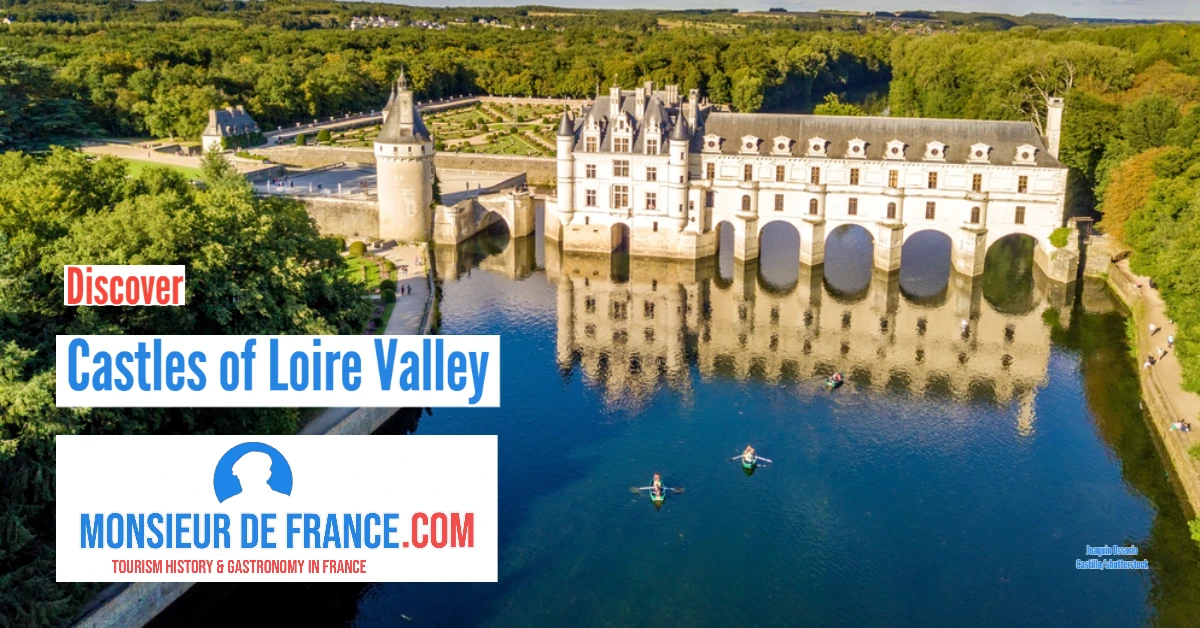
Duration of visit to Chambord
A complete tour of the château, its terraces and gardens takes at least three hours. If you also wish to explore the forest estate, allow a full half-day. Guided tours and audioguides are available, including for families and children.
On-site services
The site has several car parks, restaurants and cafés, as well as sheltered picnic areas. A boutique offers local produce, history books and Renaissance-inspired souvenirs.
It's also possible to rent bicycles, electric buggies or horse-drawn carriages to explore the estate and its forest walkways.
Visiting advice
Come in the early morning or late afternoon. The light is softer, the reflections on the stone are superb, and the atmosphere more peaceful. Those who sleep nearby can even return after 5 p.m.: the castle then seems to float in mist or turn golden, depending on the season.
Visit rates
Admission rates (as of October 1ᵉʳ, 2025) are as follows:
-
Full price: €19
-
Reduced price: €13 (students, jobseekers, disabled visitors)
-
Free for under-18s and EU residents under 26.
-
Parking is available at an additional cost;
Combined tickets also allow you to visit temporary exhibitions or take part in themed guided tours.
These prices are indicative and do not bind Monsieur de France
To avoid private resellers, it is recommended to book directly on the official website of the domain
Chambord Castle Photo by Roman Babakin/Shutterstock
FAQ about visiting Château de Chambord
How long does it take to visit Château de Chambord?
Allow at least three hours to explore the castle and gardens, or half a day if you want to enjoy the estate and take photos.
Is it worth visiting Château de Chambord?
Absolutely. It’s one of Europe’s most extraordinary castles, blending architecture, history, and nature. Seeing its reflection in the Cher River at sunset is unforgettable.
How to get to Château de Chambord from Paris?
Take a train from Paris Austerlitz to Blois-Chambord Station, then a shuttle (25 minutes) to the castle. By car, the drive takes about two hours via the A10 highway, and parking is available on-site.
Chambord / by Guy Dugas from Pixabay
Can you go inside Château de Chambord?
Yes, the entire interior can be visited — from the double helix staircase to the royal apartments, chapel, and terraces.
Can you visit the rooftop terrace?
Yes. The panoramic terraces offer breathtaking views over the Loire Valley forests and Chambord’s sculpted towers.
Who built Château de Chambord?
It was commissioned by King Francis I in 1519 and designed by Domenico da Cortona, with inspiration from Leonardo da Vinci, who lived nearby at Amboise.
What is the best time to visit Château de Chambord?
The best months are April to June and September to October, when the weather is pleasant and crowds are smaller. Summer evenings are perfect for photos and light shows.
Is Château de Chambord wheelchair accessible?
Yes. Elevators and ramps provide access to the main floors and exhibitions.
Is entry to Château de Chambord free?
Yes, for EU residents under 26, and for everyone during European Heritage Days in September.
Is there parking at Château de Chambord?
Yes. Several paid car parks (P0, P1, P2) are close to the entrance. Dedicated spaces are available for RVs and buses.
Can I bike or picnic in the park?
Yes. The Chambord estate spans more than 13,000 acres, with cycling paths, walking trails, and picnic areas.
Are dogs allowed at Chambord?
Dogs on a leash are welcome in the park and gardens, but not inside the castle.
Did Château de Chambord play a role in the wars?
Yes. During World War II, artworks from the Louvre Museum were stored here to keep them safe from looting.
Are there guided tours or audioguides?
Yes. Guided tours in English and French run daily, and audioguides are available in multiple languages on-site and online.
Are there restaurants or cafés nearby?
Yes. Several cafés and restaurants are located within Chambord village, along with picnic areas in the park.
Is Château de Chambord good for families?
Absolutely. The site offers family-friendly tours, children’s booklets, and storytelling activities all year round.
Can you stay overnight near Chambord Castle?
Yes. There are hotels, guesthouses, and gîtes nearby, including Le Relais de Chambord, located just a few steps from the entrance.
<time datetime="2025-11-10">Updated: November 2025</time>

